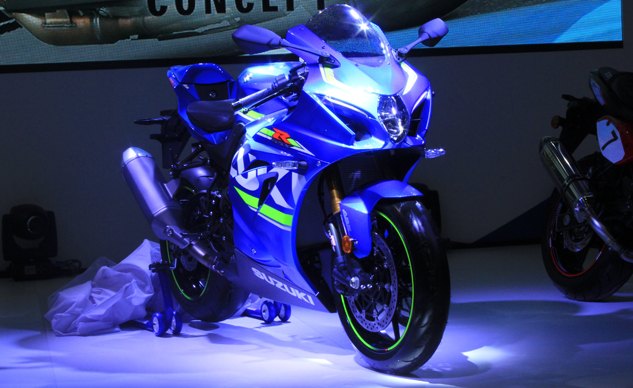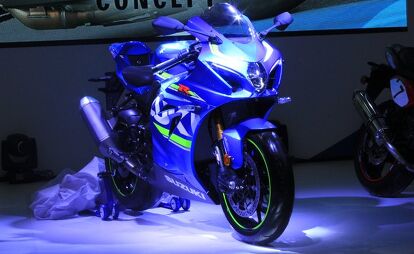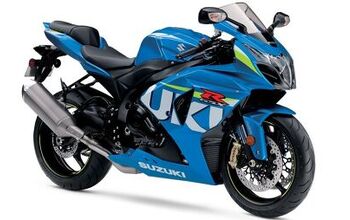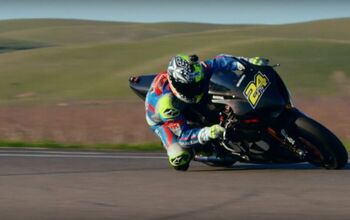2015 EICMA: Suzuki GSX-R1000 Concept + Video
“Know this: It is the most powerful, hardest-accelerating, cleanest-running GSX-R ever built.”
The above statement is from the Suzuki press release on the 2017 GSX-R1000 Concept and, well, let’s hope it’s true. Suzuki goes on to say that the Concept Gixxer is also “the lightest, the most compact, the most aerodynamic and the best-handling GSX-R1000 ever.” Some very bold statements, indeed!
Factually, here’s what we know. The all new 999cc liquid-cooled DOHC inline-Four was developed with MotoGP technology to be compact and to increase peak power without losing low-to-mid range output. Suzuki Racing Variable Valve Timing (VVT) positions steel balls in grooves in the intake cam sprocket and adjacent guide plate. When moved outward by centrifugal force, they stack in different grooves during low and high RPM. During high RPM operation the system rotates the intake cam, retarding intake cam timing which elevates peak power.
Suzuki Exhaust Tuning-Alpha (SET-A) adds two servo-operated SET-A butterfly valves, one in each header balance tube. The SET-A valve in each header balance tube remains closed to enhance lower-RPM and mid-range power, then opens to add power at higher RPMs.
Showa Balance Free Rear Cushion (BFRC) rear suspension is claimed to be significantly lighter than previous versions. As the BFRC shock piston moves, oil is pushed through external damping circuits, through a valve stack and back into the shock, on the other side of the solid piston. The system balances pressure on both sides of the piston, allowing smoother, more consistent piston movement and damping.
In the electronics department the Concept Gixxer is outfitted with a ride-by-wire throttle, a ten-level traction control system, three different power modes via the Suzuki Drive Mode Selector (S-DMS) system, a quick-shifter for both up- and down-shifts, launch control and ABS.
No word yet on pricing or availability.
A former Motorcycle.com staffer who has gone on to greener pastures, Tom Roderick still can't get the motorcycle bug out of his system. And honestly, we still miss having him around. Tom is now a regular freelance writer and tester for Motorcycle.com when his schedule allows, and his experience, riding ability, writing talent, and quick wit are still a joy to have – even if we don't get to experience it as much as we used to.
More by Tom Roderick











































![Suzuki GSX-R1000 Assembly [video]](https://cdn-fastly.motorcycle.com/media/2023/05/31/11738623/suzuki-gsx-r1000-assembly-video.jpg?size=350x220)














Comments
Join the conversation
squixxer one thousand
VVT on a sportbike is huge. This bike will be the midrange and possible overall power king